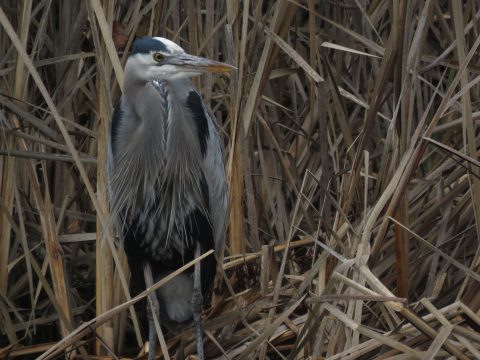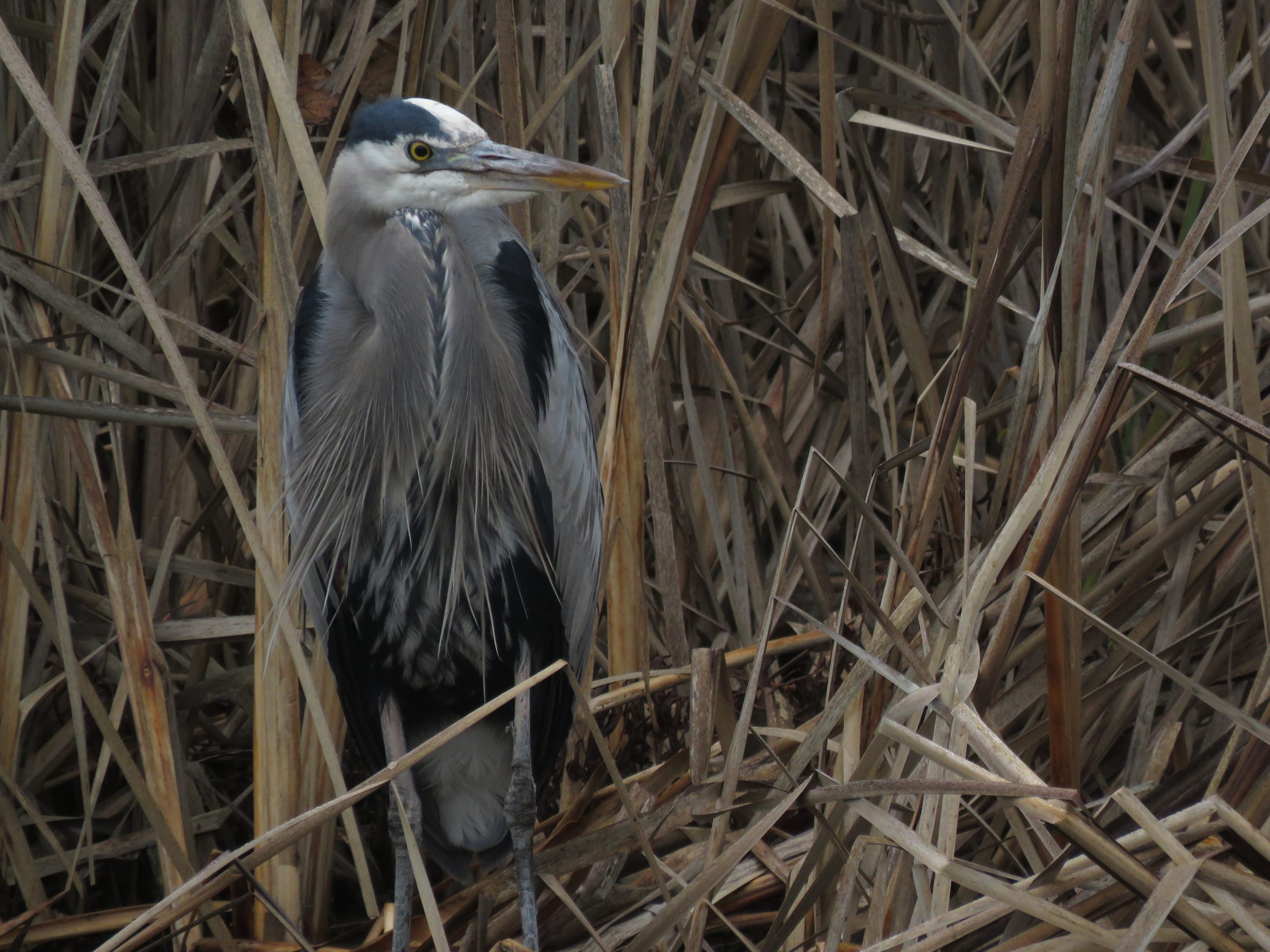Bird of the week: Great Blue Heron
About: Appearing a bluish gray, with brown shoulder patches and beautiful yellow beaks, great blue herons are a common bird to see near water. They mostly eat fish and frogs, but they will also hunt rodents in wet fields along with great egrets, which are very similar in shape and size, but are pure white.
Where to find this bird: They can show up pretty much anywhere along the Fox River; however, they are probably most common below the dam by Olde Oneida Street.
When to find this bird: March – November.
Fun fact: When they fly, great blue herons fold their neck back, making it look much shorter than it actually is.

And tonight’s bird forecast. . .
When most people plan an outdoor adventure, they check the weather forecast to see when to go outside, but can you imagine if you could check a bird forecast to see when the best time to go birding is? What if you could see when and how birds will move through just like how weather radars pick up when rain could come through? In fact, there is a bird forecasting system called Bird Cast, which produces forecasts during spring and fall migration that predicts bird migration.
Bird Cast runs off of the same radar technology that produces our weather forecasts; in fact, radar can pick up everything from insects to hurricanes. Also known as radar ornithology, using radar to research birds arose when early radar engineers noticed odd dots that didn’t correspond with known weather events. Ornithologists eventually figured out that they were birds showing up on the radar, and thus radar ornithology was created. To this day, birds will show up on weather radar semi-frequently and produce radar patterns that defy all weather patterns.
Since the early days, radar engineers have figured out how to differentiate between different weather and biological forms; applying these methods to the millions of eBird data points, Bird Cast has developed an advanced bird forecasting and tracking system. Because most birds migrate at night, Bird Cast allows scientists to track birds that they would not otherwise be able to see. While migrating at night, light pollution is the greatest threat to birds that have not adapted to giant skyscrapers and bright cities. These lights confuse and exhaust migrating birds and increase the likelihood that they will collide with buildings, which scientists estimate kill between 365 – 988 million birds annually. However, with detailed migration forecasts, conservationists have started working with some of the largest cities in the world such as Houston, New York City and Chicago to dim lights and let birds safely pass through their airspace. The detailed forecasts that Bird Cast provides are key in helping conservationists prioritize lights-out efforts so birds can navigate our dangerous cities.
It is not just scientists who enjoy the benefits of Bird Cast, though. Birders like myself check it daily during migration to figure out which days we should skip breakfast and look for birds instead. In addition to a three day forecast, Bird Cast provides detailed live migration maps showing bird density and flight direction, a migration dashboard with information about how many birds crossed a given area’s airspace on a given night and a list of the top migrants coming through during that evening. It is a truly amazing technology and I highly recommend checking it out for yourself at birdcast.info!
Have questions for our birder? Ask them here!

